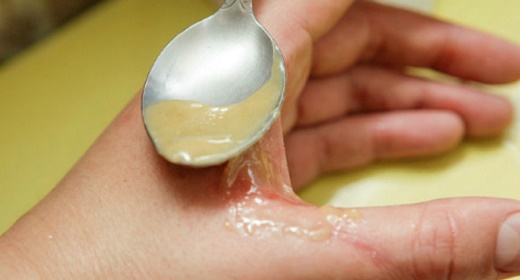by Ocean Robbins: One of the scariest characters in cinematic history is the Wicked Witch of the West from The Wizard of Oz, who has terrified generations of children with her villainous antics, ominous cackle, and green skin…
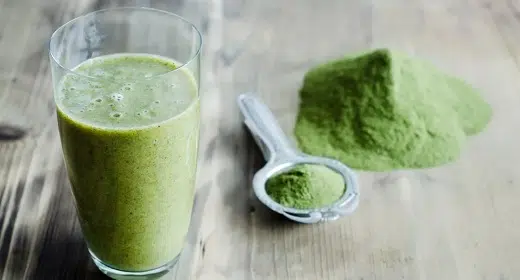
We are proud to announce a new partnership with John and Ocean Robbins and the Food Revolution to bring our readers Summits, Seminars and Masterclasses on health, nutrition and Earth-Conscious living.
Sign Up Today For the Healthy Brain Masterclass
The actor who played the Wicked Witch, Margaret Hamilton, had a lot to be scared of as well. Her skin was tinted green using toxic, copper-based makeup, which caused first-degree burns to her face when it caught fire in a mishap during filming. And she retained that green hue for weeks after they finished shooting her scenes for The Wizard of Oz.
But then in 1975, the 73-year-old Hamilton, now a grandmother of three, appeared on Mister Rogers’ Neighborhood in a segment intended to help kids get over their fear of the witch. After chatting amiably, Rogers invited Hamilton to don her costume — long skirt, long cape, and pointy witch’s hat — over her pastel dress and pearl necklace. She even performed her terrifying laugh, as she and Rogers kept returning to the fact that she was just a regular person who was playing make-believe. And it sure helped that they omitted the green makeup this time.
Thanks to the magic of movies, makeup was able to transform a sweet woman into a frightening villain. But over the past couple of decades, a different kind of green powder keeps making headlines — one made from food and with a very different function: promoting health and fighting disease. Hundreds of commercially produced green powder supplements are now on the market, with different ingredients and varied health claims.
Manufacturers and social media influencers tout green health powders as an easy way to get all the benefits of vegetables, fruit, and other nutritious foods. But are they actually good for you? Are they worth the cost, or are you better off just eating the greens whole? And are green powders just another superfluous or even potentially harmful supplement?
In this article, we’ll take a look at green powders, and see whether they’re good, wicked, or somewhere in between.
What Are Green Powders?
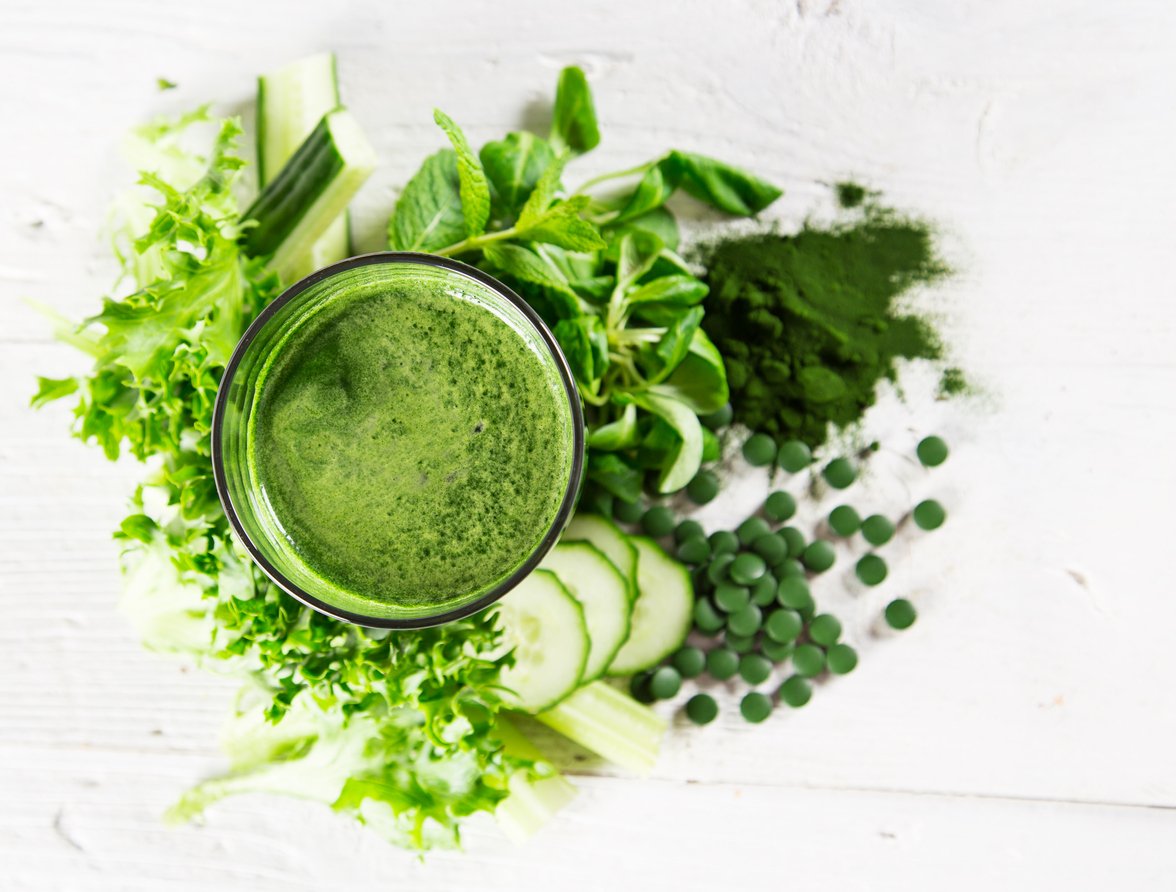
Green powders are typically a concentrated mixture of dried and powdered leafy greens and other whole plant foods.
Brands and products differ, but common ingredients in green powders include:
- Leafy greens
- Vegetables
- Seaweed or algae (such as spirulina or chlorella)
- Fruit
- Probiotics
- Herbs (including adaptogens)
- Natural extracts
- Grasses (some may be fermented or sprouted)
Some green powders are also fortified with vitamins and minerals, digestive enzymes, and additives to enhance flavor, color, or texture.
Even though they come from whole foods, green powders are considered supplements. You can generally find them in the supermarket supplement aisle, online, in the health and beauty section of natural foods stores, and in dedicated supplement shops.
Green powders are often marketed as an easy and convenient way to get the benefits of high concentrations of healthy foods — leafy greens, herbs, fruits, and veggies — that you’re probably not getting enough of. Some proponents see them as “the next best thing” to eating copious quantities of whole plant foods. Others argue that the concentrated formulations can be nutritionally superior to food, not only keeping your body optimally functional but treating specific conditions as well. But what does the research say about green powders?
Do Green Powders Work?
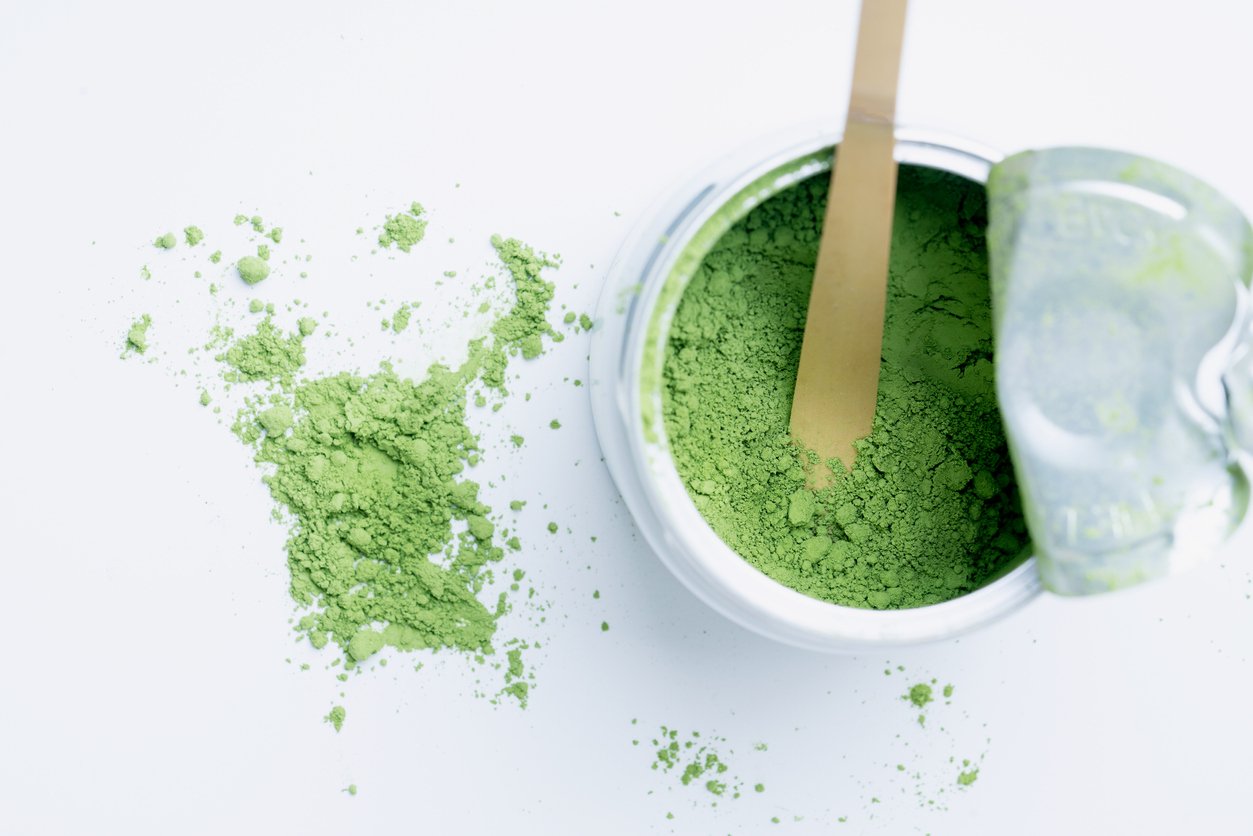
This is the part of the article where I usually share the latest scientific research on the food or supplement under discussion. Stuff like, “Researchers found that people who ate the most orange bell peppers solved Wordle puzzles 18.4% faster than those who ate the least.” (I’m totally making that up, by the way — my guess is that mushrooms are much more significant contributors to Wordle prowess.)
The problem is, that there’s almost no independent research on the actual effects of green powders on performance, mood, or health. And in any case, since different formulations can contain vastly different ingredient profiles, there’s no blanket statement to be made about whether green powders work or not.
Instead, what we have are competing claims by different brands, touting their products’ benefits for things like weight loss, reducing gas and bloating, increasing collagen production (for that lovely un-Wicked-Witch-of-the-West skin), balancing mood, or just boosting health in general thanks to their concentrated “superfoods.”
There’s no way to confirm or rebut most of these claims since they usually come from the company selling the product and typically aren’t backed up by unbiased research studies — which is to say, studies that haven’t been funded by the company that stands to gain from a positive result.
Study Conclusions Are Often Biased
You might think that funding wouldn’t necessarily make a huge difference to the study conclusions, but there’s ample evidence that it does in a variety of nutritional domains. A 2005 anonymous survey published in the prestigious science journal Nature found that fully 20% of mid-career scientists admitted to “changing the design, methodology, or results of a study in response to pressure from a funding source.”
Take research into whether sugary drinks are bad for you. In 2016, researchers analyzed 60 studies on the relationship between sugary drinks and obesity and/or diabetes. Twenty-six of them were funded partially or fully by soft drink companies, and 34 were not. Not a single one of the 26 industry-funded studies found an association between sugar-sweetened beverages and poor health outcomes. Yet 33 out of 34 independently funded studies did show such an effect.
In my opinion, relying upon and relaying the claims generated by studies commissioned and paid for by the companies who stand to profit from sales would be irresponsible. If you have a green powder brand that you like, you can check out the research on their website, take it with a grain of (low-sodium) salt, and make your own decision about whether to invest in their product.
That said, it’s reasonable to assume some basic benefits of at least some varieties of green powders since they’re made by drying and grinding leafy greens, which are known to be some of the healthiest foods on the planet. While some industrial processes seriously diminish the nutritional value of foods (like turning whole wheat berries into bleached white flour, or deep frying and salting potatoes to make potato chips and French fries), dehydrating and powdering greens is unlikely to dramatically rob them of their nutritional oomph, let alone make them unhealthy.
What Are the Benefits of Green Powders?
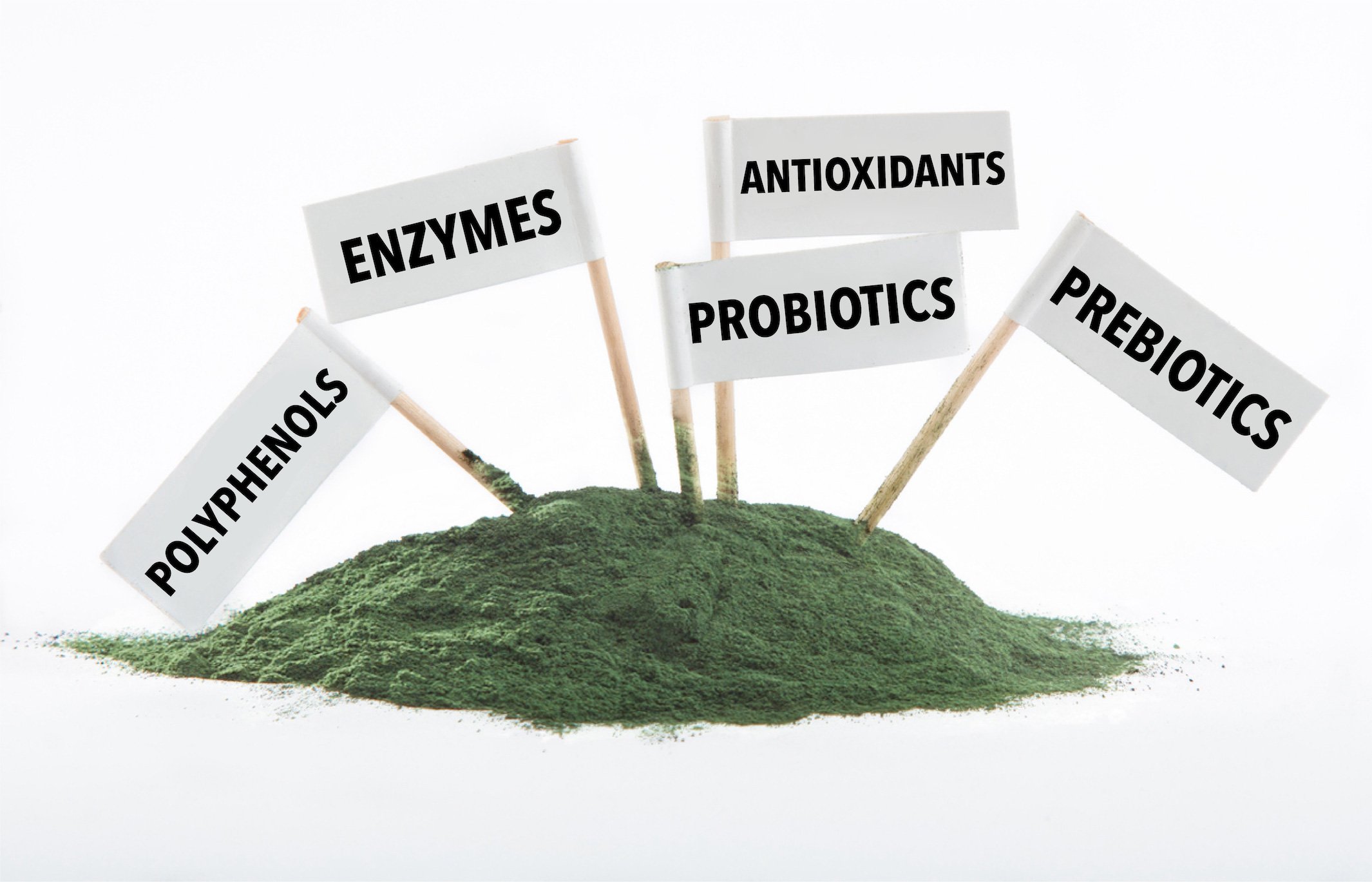
Green powders can be an easy way to consume more fruits and vegetables, which is a good strategy for boosting your nutritional intake. Especially if you find it hard to prepare healthy home-cooked meals, you travel a lot, or you are (or live with) a picky eater who’s not thrilled with eating vegetables and fruits on a daily basis. Green powders can help fill the gap.
Green powders can also provide you with the benefits of greens when they’re out of season and you can’t access fresh ones. In some regions of the world, leafy greens tend to bolt in response to long, hot summer days, and if you want greens during those months, you either have to import them, use frozen ones, or rely on powdered greens. The powders have the added benefit of a longer shelf life than fresh or frozen produce. And if you’re short on freezer space, they don’t take up very much real estate.
Because green powders are concentrated (largely through the removal of water), you need only a small amount of powder to get the nutritional equivalent of multiple servings of greens, vegetables, and fruits.
It also makes sense that properly formulated green powders can support gut health. Like the veggies and fruits they’re made from, green powders also contain organic compounds like polyphenols and antioxidants, which promote beneficial gut bacteria. And some green powders also have added prebiotics, probiotics, and/or digestive enzymes.
Green powders can also deliver a potent mix of antioxidants, which have been shown to increase the levels of these beneficial compounds in blood. Antioxidants combat oxidative stress, a process that can contribute to heart disease, cancer, type 2 diabetes, and Alzheimer’s, as well as conditions associated with aging, such as cataracts.
Are Green Powders Worth It?
The answer to “Are green powders worth it?”, like the answer to most questions, is, “It depends.” For someone who eats almost no produce — fresh or frozen, raw or cooked — a well-formulated green powder may provide immensely valuable nutritional supplementation. But for someone already eating the recommended amount of fruits and veggies (which, according to the CDC, describes only 10% of the US population), there may be much less benefit.
For one thing, while most green powders contain high amounts of vitamins and minerals, there isn’t enough research to understand how bioavailable they are — that is, how much your body can absorb and use. Whole foods aren’t just static collections of nutrients — a tomato is far more biologically potent than the vitamins, minerals, and phytonutrients in it taken on their own. It’s not at all clear whether fiber plays a big role in helping your body get the most out of the other nutrients, or whether fresh or “living” foods have something important that dehydrated foods do not.
And while green powders are sometimes described as whole foods, they are, in fact, missing two extremely important nutrients: water and fiber. Processing renders them shelf-stable and highly concentrated, making them easier to transport, store, and display for sale. But it also comes with downsides. For one, fiber and water trigger satiety, so replacing whole fruits and veggies with powder represents a missed opportunity to help your body know when it’s time to stop eating, especially if you’re sprinkling the powder on things like pasta dishes or drinking it in sweet smoothies. And most people don’t drink enough water to begin with, so the hydration provided by whole produce is important.
It’s clear that green powders can’t fully replace a whole foods diet. Eating these foods in their whole food state is still the best way to get all the nutrients your body needs. But green powders may give you a boost, nutritionally, especially if you’re easing into eating healthier, don’t always have time to sit down to a full meal, or travel a lot and appreciate having healthier dehydrated foods. But some green powders are also fortified with additional vitamins and minerals, which may not be necessary if you’re already taking other vitamins or supplements, in addition to eating a healthy balanced diet.
Green Powder Side Effects and Downsides
In fact, it’s possible to get too much of certain vitamins and minerals. Two nutrients that can be problematic in excess are vitamin D and iron. And not all synthetic vitamins are beneficial, so you may want to check how much is in your green powder (and pay attention to serving size — you may be adding a quarter-cup scoop when the manufacturer has calculated nutrition facts based on a serving of a single tablespoon).
Many green powders provide high amounts of vitamin K, which is generally good for you, but can interact with a variety of prescription medications like antacids, certain blood thinners, antibiotics, aspirin, and drugs for cancer, seizures, and high cholesterol, among other conditions. If you take any of these pharmaceuticals, you may want to consult your health care team before adding a green powder to your supplement regimen.
While you’re checking the label of your green powder of choice, be on the lookout for certain ingredients that can cause side effects or allergies in some people. But even if nothing on the label concerns you, you’re not necessarily in the clear.
Like all supplements, green powders are not tested or approved by the Food and Drug Administration. Worldwide, oversight and compliance vary by country or region. That is, no official authority exists to verify that supplements contain what they claim to contain; whether the included ingredients are safe; and even whether they contain heavy metals, bacteria, or pesticides. You either have to trust the brand’s label or check whether a particular product has undergone testing by an independent third-party service such as ConsumerLab, NSF, or USP.
Many green powders also contain ingredients that could be concerning for some people. For example, spirulina and chlorella powders may contain sulfites and can trigger allergic reactions in those sensitive to those compounds.
If you have a wheat allergy or celiac disease, make sure your green powder is certified gluten-free. And if you’re dealing with an autoimmune disorder such as lupus or MS, you may want to avoid powders that contain alfalfa sprouts or seeds because of their immune system-stimulating effects.
That’s not an exhaustive list. There may be other troublesome ingredients, including additives and natural flavors in green powders, not to mention added sweeteners, so make sure to read ingredient labels before ingesting.
Also, there’s the question of cost. Like many other supplements, green powders can be pricey for some. Most cost upwards of $30 per 10 ounces, which can come out to more than a dollar per serving. Fortunately, you can cut that cost significantly by making your own green powder at home — using whole leafy greens, vegetables, fruits, mushrooms, and/or herbs.
DIY Green Powder
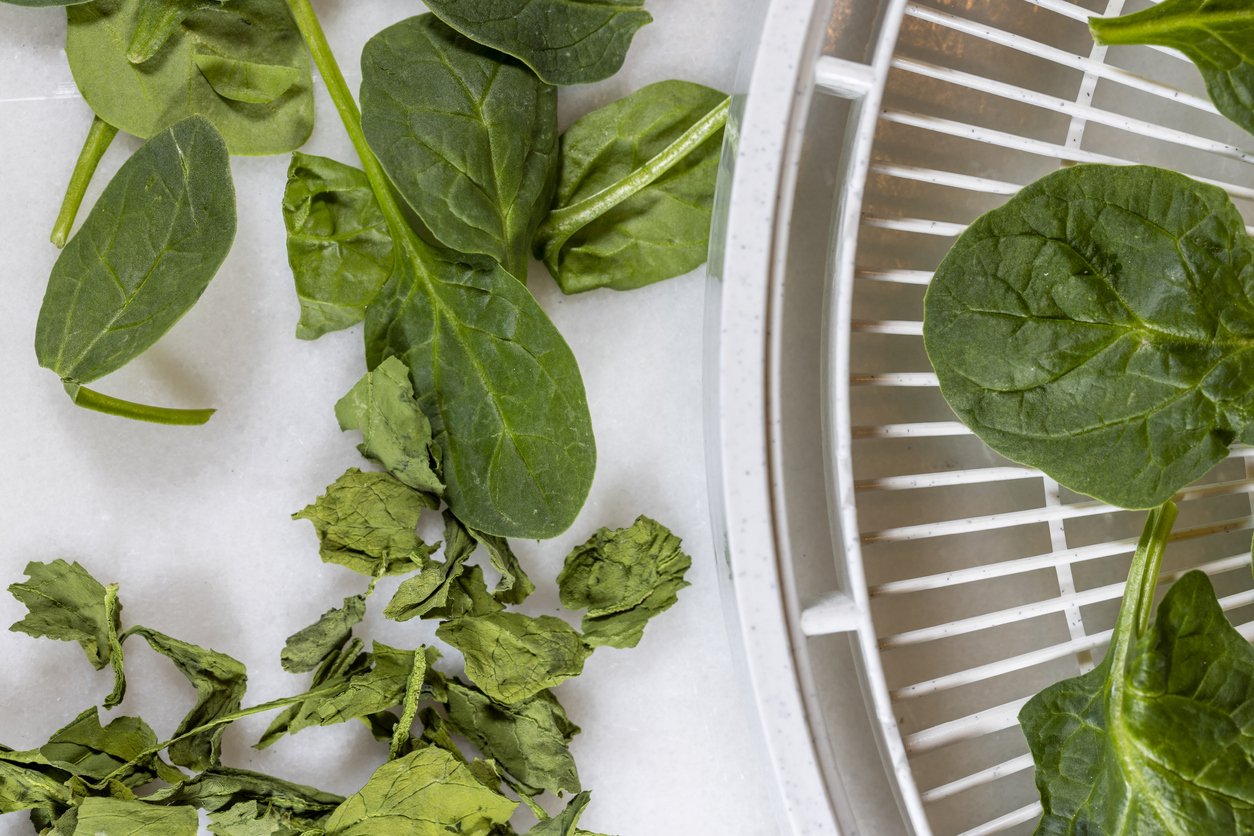
If you have access to fresh greens, veggies, fruits, mushrooms, and herbs in bulk, you can dehydrate and grind them into your own green powder blend, which will contain exactly what you put into it, and nothing more. You can use a dehydrator, your oven, or sun drying methods. (Here’s our detailed guide to dehydrating food.)
If you use a dehydrator, put it at the lowest temperature setting (ideally no higher than 110℉) to preserve as many nutrients as possible. Figure on 3–4 hours to complete the job, but use your judgment rather than a timer, and make sure there’s no moisture at all in the dehydrated produce before removing it from the machine. When dry enough, blend the dried greens and other foods in a blender or food processor.
Here’s a video showing how to turn garden greens into a DIY green powder, using a dehydrator and food processor.
If you don’t feel like making the effort to create your own green powders, there are a number of brands that use organic whole food ingredients with no added dairy, sweeteners, or harmful additives, and have undergone third-party testing. For example, Complement Daily Greens is organic, third-party tested, contains no sugars, and comes in compostable packaging (for more about Daily Greens, see the Editor’s Note at the end of this article).
How Are Green Powders Used?
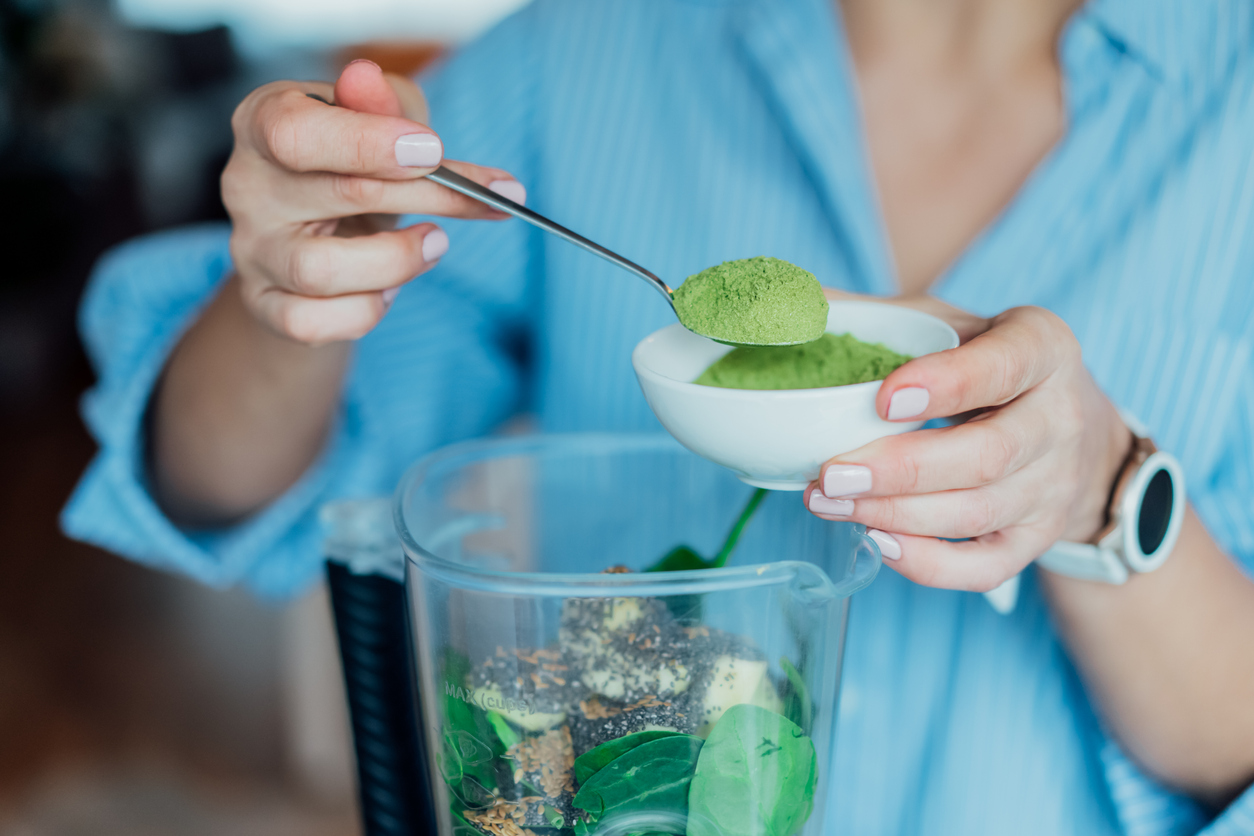
Green powders can be quite bitter or have a grassy taste, so they’ll generally go down easier when mixed with other more palatable foods. If you decide to include green powders in your diet, you might start by using them in a green smoothie or other beverage. Here’s a comprehensive guide to smoothies to get you going.
If you don’t mind the taste, you can also mix your powder into a glass of water, or add it to oatmeal, overnight oats, or chia pudding to add a fun burst of color and nutrients to your breakfast. You can blend green powders into homemade salad dressings and sauces. And for snacks, mix it into energy balls and homemade granola bars.
If your green powder isn’t sweet, with no fruit or other sweetener added, you can even add it to savory dishes such as soups, stews, and chilis, as well as vegetable dips. Finally, you can just sprinkle the powder over any hot meal you like.
Green Powder Recipes
Think outside of the box when it comes to creating a delicious vehicle to deliver your favorite green powder. They’re highly versatile and can add a vibrant hue to your breakfast, lunch, and dinner, as our five recipes below demonstrate. The Green Magic Smoothie or Green Bliss Energy Bites would be great places to start if this is your first culinary adventure with green powders. From there, expand your green powder recipe repertoire with Mighty Green Chia Pudding, Superfood Pesto, and Green Paradise Dressing. They’re all green superfood heroes in our kitchen!
1. Green Magic Smoothie
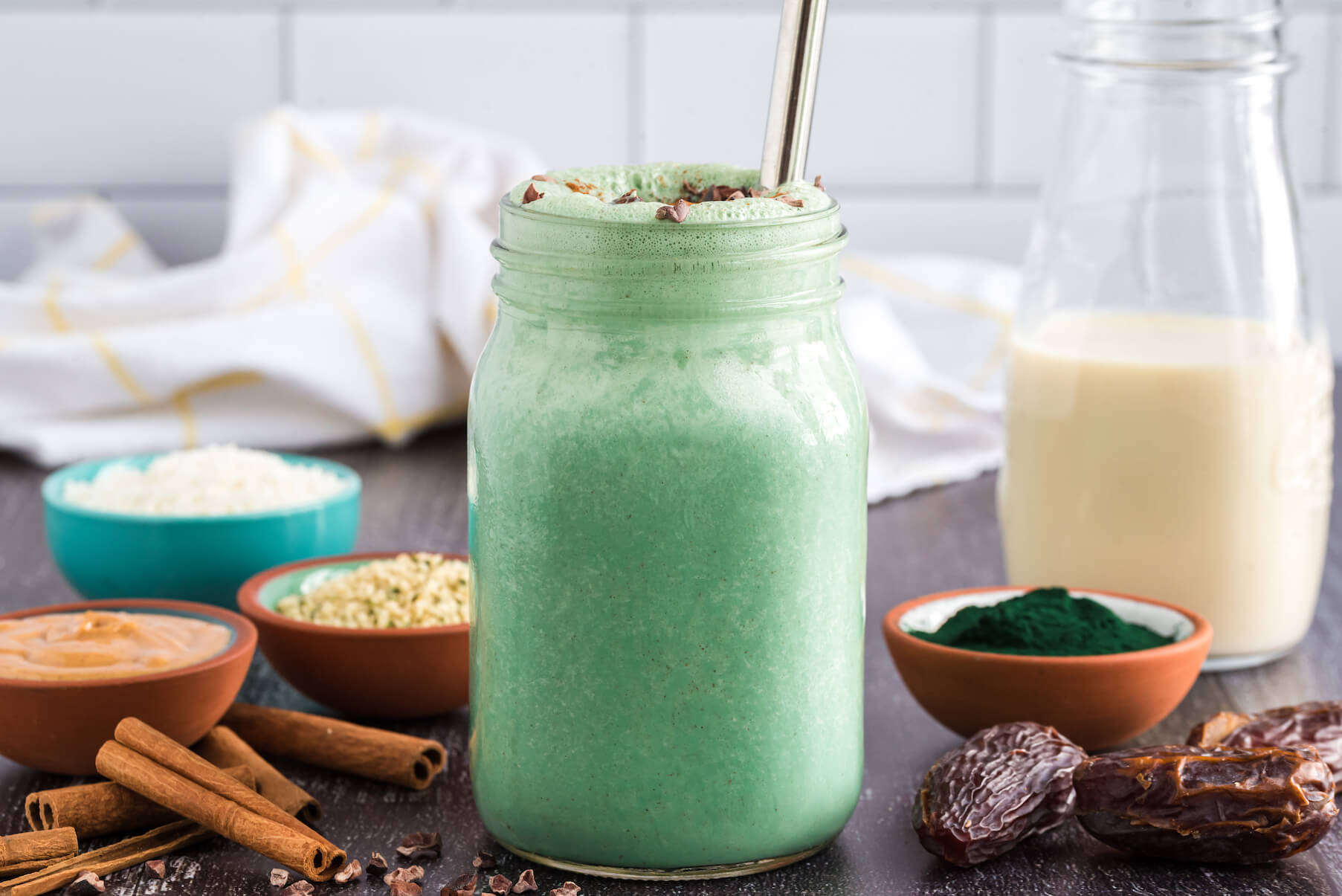
Blend up some whimsy with this enchanting Green Magic Smoothie. What makes this smoothie magical (aside from all the wholesome plant ingredients) is the addition of daily greens in powder form. This nutrient-dense smoothie is a supercharged source of protein, vitamins, minerals, and powerful antioxidants lending to its antiinflammatory properties. Plus, it’s heart healthy and gives a fantastical bright green hue!
2. Green Bliss Energy Bites
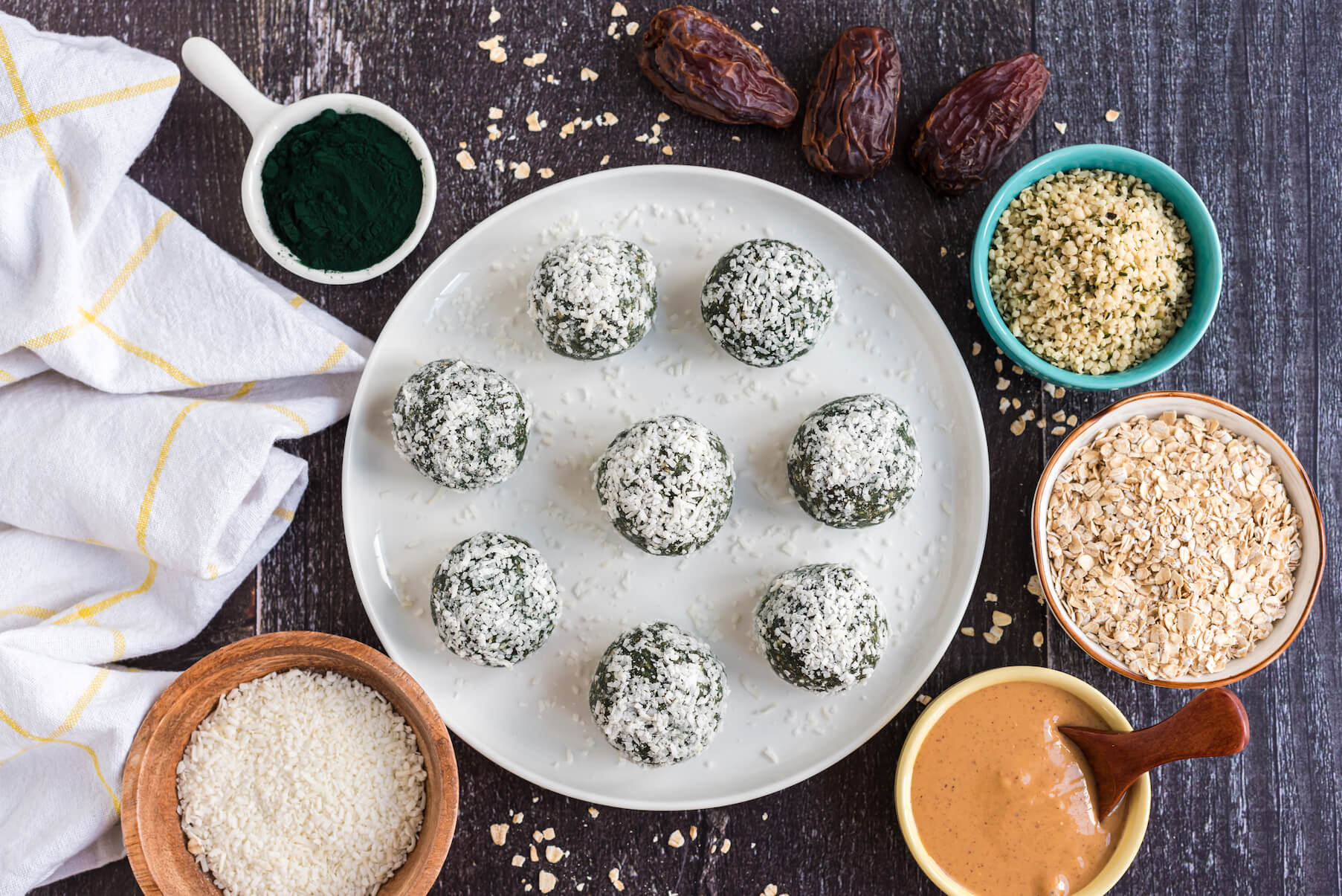
Help your family (big and small) get their leafy greens by incorporating greens powder in these nutty-flavored Green Bliss Energy Bites. Peanut Butter and coconut shine through and disguise the leafy green flavor. For those with nut allergies, substitute sunflower butter for the peanut butter (they are just as scrumptious). Enjoy these as a snack or a grab-n-go green breakfast!
3. Mighty Green Chia Pudding
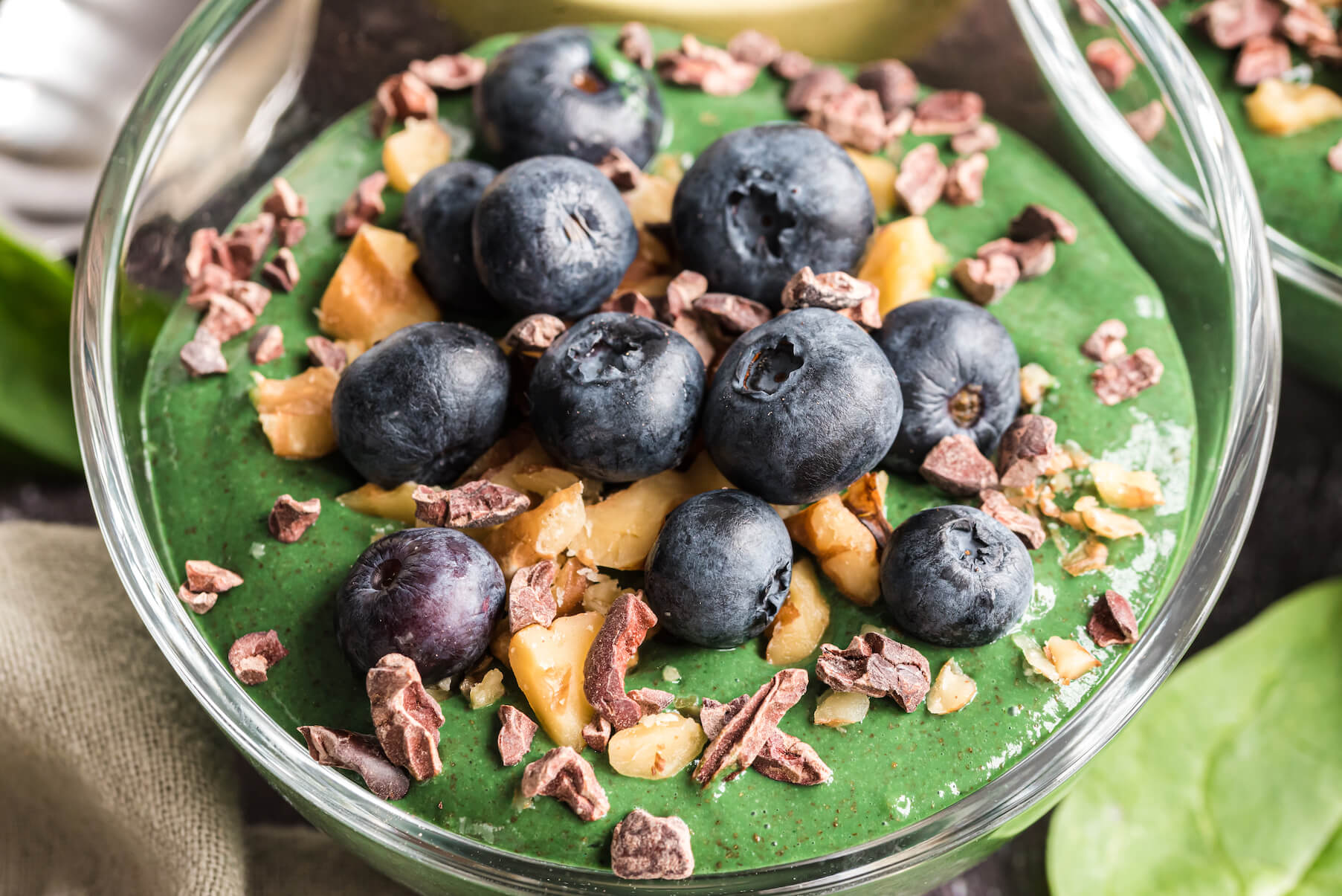
Want to get in your daily dose of greens, but searching for a new way to enjoy them? Mighty Green Chia Pudding is a delicious alternative to your daily green smoothie and works as an invigorating breakfast, light afternoon snack, or a wholesome green dessert. Greens powder and organic spinach are blended together with nutrient-rich chia seeds, sweet dates, creamy plant milk, and healing spices for a luscious green pudding that is simply a treat to eat!
4. Superfood Pesto
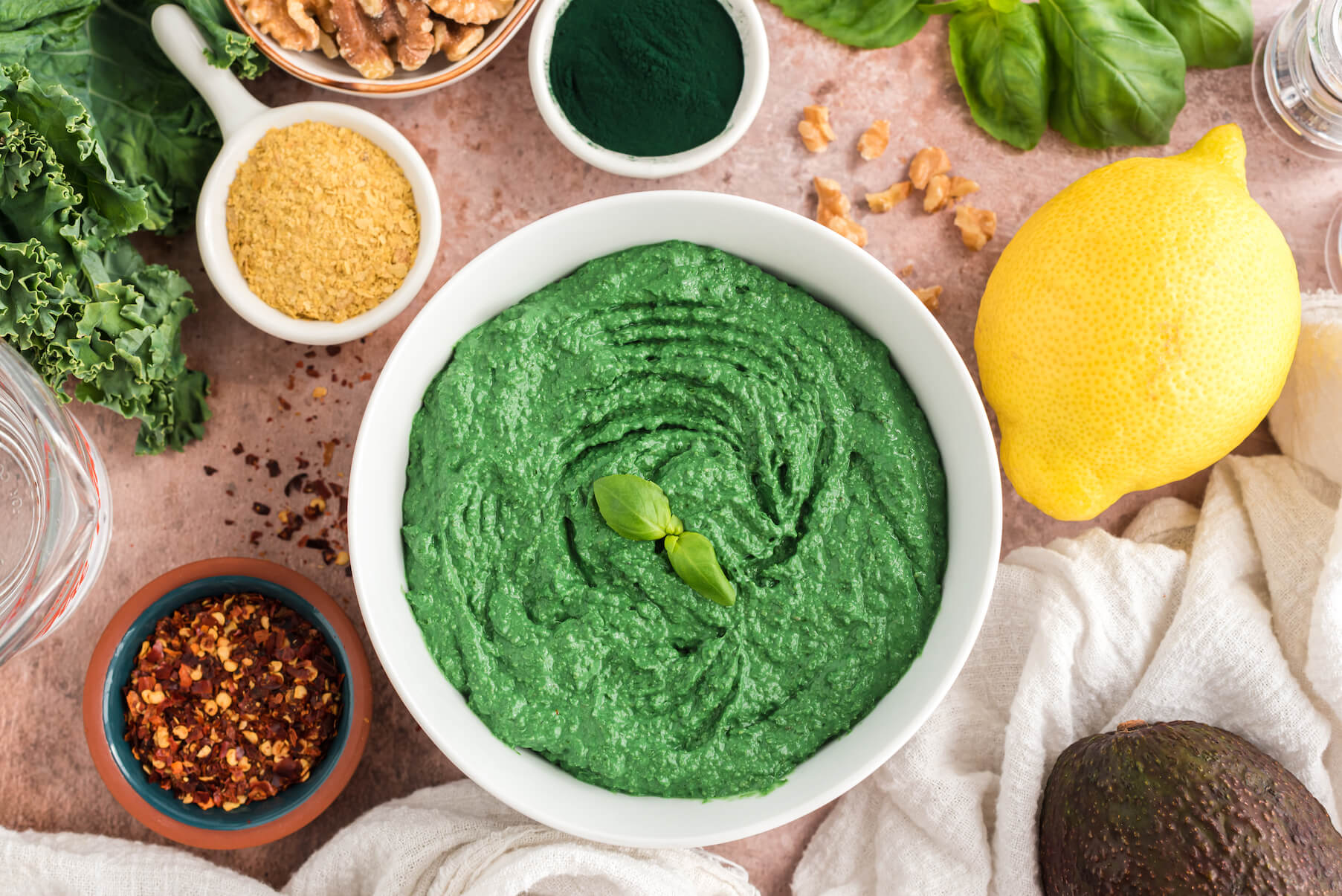
Plant-based pesto already tops the nutrition charts with its combination of healthy fats from nuts, leafy greens, fresh garlic, and, of course, herbaceous sweet basil. Adding a scoop of your favorite green powder kicks it up a notch in the nutrition department. What’s great about adding greens powder to savory recipes is the super concentrated source of plant nutrients like vitamin K, beta carotene, folate, and antioxidants you get from whichever green powder you use. If you feel like your nutrition has been lacking, Superfood Pesto may be the tastiest way to get a boost of nutrients!
5. Green Paradise Dressing
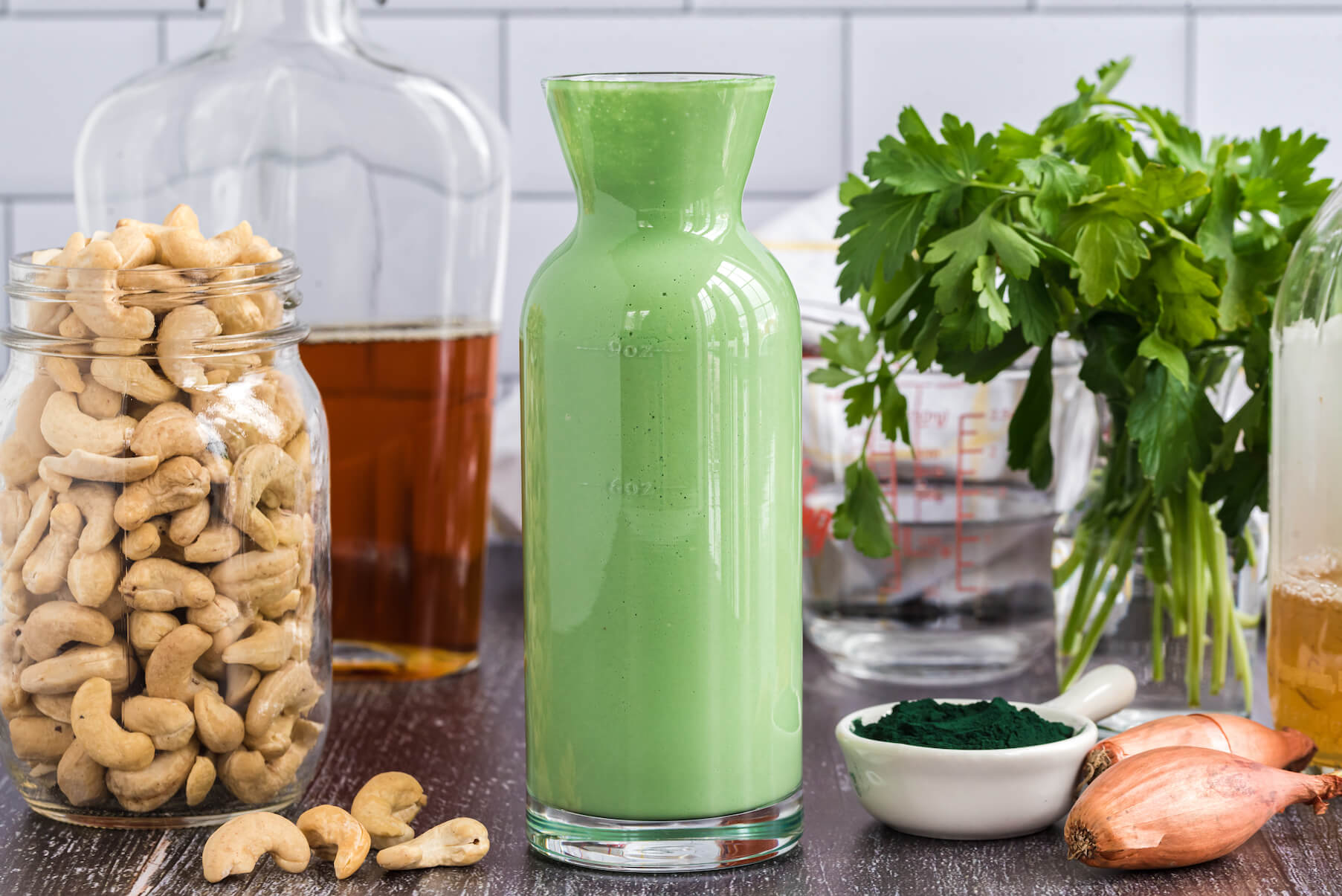
Greens powders can be used in many innovative ways, like in this delicious Green Paradise Dressing. Impress your loved ones with this bright green dressing that is protein-packed, mineral-rich, and delightfully creamy! Serve alongside a salad or grilled veggies at your next plant-based gathering. Or, make it for yourself to enjoy throughout the week on salads and grain bowls. Adding greens in powder form is one delicious way to enjoy your greens!
The Best Green Powders Are Homemade
Green powders are supplements that contain powdered greens, and sometimes vegetables, fruits, herbs, and other ingredients as well. Their marketing often touts specific health benefits, but as of yet, these claims haven’t been put to the test in a rigorous way.
We do know, however, that many of the fruits and vegetables that go into them are health-promoting, so it’s not unreasonable to assume there could be benefits in their concentrated form as well. For people who don’t regularly consume fruits, vegetables, and other healthful foods, green powders may indeed provide vital nutrients that they’re currently lacking.
If you’re trying to decide between getting your nutrients from a whole foods diet and green powders, there are many reasons to lean toward the first option. You can get all the claimed benefits from eating whole foods in their fresh or frozen state, in addition to water and fiber. Plus, some ingredients in green powders can trigger side effects and can interact with prescription drugs, so be sure to consult with your health care team before adding them to your diet.
If you do like the idea of green powders as a convenient way to add more plants to your diet, you may want to make your own, so you have total control over the mix and quality of ingredients.










